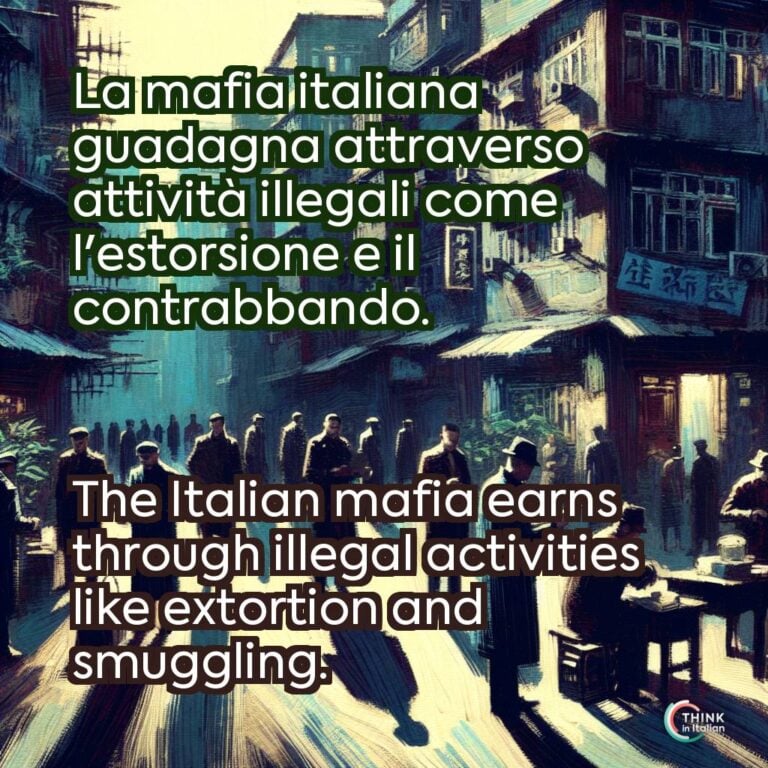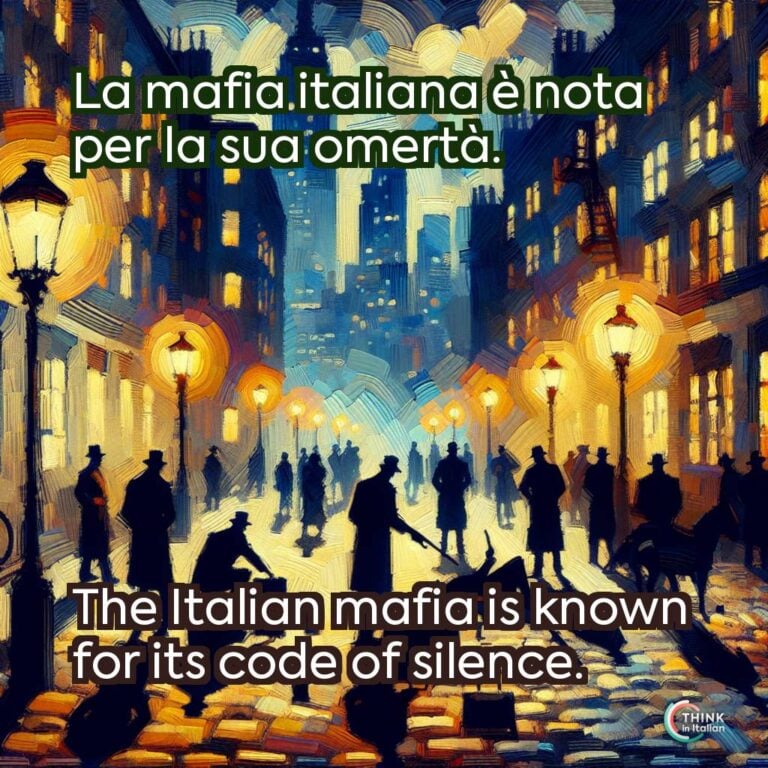The Italian Mafia
What is the Mafia?
When you hear the word Mafia, you probably picture secretive figures, secret codes, and dramatic power plays. But its reality is much more complex and deeply rooted in Italy’s history, culture, and even its language.
The Mafia refers to organized crime groups originating from Italy, mainly operating in Sicily, Calabria, and Naples. It once described the Mafia of Sicily but came to be used as a generic term for organized crime over the world.
These organizations all have identifying characteristics: hierarchies, loyalty, and using fear as a method of control, but each has its own particular structure.
Here, I will guide you through details, curiosities, and deeper explanation of what Mafia is, where it came from, how it evolved, and what impact it still has today.
Historical Roots of the Mafia
The Mafia’s story begins in the 19th century, during a time when southern Italy faced widespread poverty, weak institutions, and foreign rule.
After Italy’s unification in 1861, the southern regions were largely neglected. Without support from the government, informal groups stepped in to provide protection and justice, though often through intimidation and violence.
Centuries of foreign rule in Sicily-including the Arabs, Normans, and Spanish Bourbons-developed a leery nature among common people toward outsiders.
People formed secret groups to protect themselves and their communities. These eventually evolved into what is commonly now referred to as the Sicilian Mafia.
What started off as alleviation against poverty and injustice bloomed into powerful criminal organizations intertwined with the social fabric of southern Italy.
Major Mafia Organizations
Sicilian Mafia: Cosa Nostra
Cosa Nostra, meaning “our thing”, is synonymous with the Sicilian Mafia. After WWII, it played a key role in post-war reconstruction but became infamous for its brutality, particularly in the 1980s and 1990s.
Judges Giovanni Falcone and Paolo Borsellino led a historic crackdown, resulting in high-profile trials but ultimately losing their lives to Mafia violence.
Camorra in Campania
The Camorra, centered in Naples, is Italy’s oldest Mafia group, originating in the 15th century. It operates in a decentralized manner, making it harder to dismantle.
‘Ndrangheta in Calabria
The ‘Ndrangheta, founded in rural Calabria, is now one of the world’s wealthiest crime syndicates, controlling much of the global cocaine trade. It relies on family ties and arranged marriages, making infiltration by law enforcement extremely difficult.
The American Mafia
The Mafia traditions were brought to the United States by Italian immigrants and gave rise to a powerful crime organization in cities like New York and Chicago.
Figures like Al Capone and Lucky Luciano became famous and spurred movies like The Godfather and Scarface that romanticized Mafia culture.
Cultural Dimensions of the Mafia
Mafia’s Cultural Legacy
The Mafia is more than a criminal enterprise, it intermingles deeply within the cultural fabric of southern Italy, thereby dictating how communities interrelate and how outsiders view the region.
Its presence can be traced through language, traditions, and narratives of survival, though one must be in a position to separate this cultural involvement from regional identity.
Over time, Mafia was an acting pseudo-government when state authority became absent. But all the same, associating Mafia with southern Italian culture romanticizes their presence and deprives it of its injurious role.
The Mafia is a representation of historical inequalities, yet not of people’s identity, who by large actively resist such narratives in a bid to reclaim their region’s rich heritage.
Mafia Lexicon
The Mafia’s influence extends to language, with terms entering both Italian and global vocabulary. These words have infiltrated everyday speech, often retaining their sinister connotations:
- Pizzo: protection money demanded by the Mafia, with refusal leading to threats or violence.
- Omertà: the code of silence forbidding cooperation with authorities. Historically rooted in distrust of external rulers, it now perpetuates fear and complicity.
- Capo: the head of a Mafia clan or family who oversees all operations.
- Lavaggio di denaro (money laundering): the process of disguising illegal profits as legitimate income.
- Vendetta (revenge): a retaliatory act, often for perceived betrayal or loss of honor.
- Traditore (traitor): a person who betrays the Mafia, often punished severely.
- Pentito (repentant): a former Mafia member who collaborates with law enforcement in exchange for leniency.
Myth vs Reality
The Mafia’s portrayal in films like The Godfather and Scarface has shaped global perceptions, often romanticizing it as an honorable, family-oriented institution.
These narratives focus on loyalty and rituals, creating a myth of nobility that obscures the harsh realities. In truth, the Mafia thrives on violence, fear, and exploitation, disrupting lives and economic progress.
This glamorization upsets many Italians and only feeds into those very harmful stereotypes that all Italians are somehow complicit in-or proud of-the Mafia’s legacy.
If we go beyond the myth, our perception of the Mafia’s real impact will give support to the struggle against its influence. Attention should shift to focus on those resisting the Mafia, taking back their communities, and their cultural identity.
Global Influence and Modern Operations
International Expansion and Influence
The ‘Ndrangheta has gained a notorious reputation for its global reach, with a presence in countries like Canada, Germany, and Australia.
It plays a major role in the international cocaine trade, using strong family ties and secretive operations to manage supply chains across continents.
Similarly, the Sicilian Mafia Cosa Nostra and the Camorra have expanded their criminal activities abroad, often finding opportunities in countries with looser regulations or large Italian communities.
The mafia also launders money by investing in legitimate sectors such as real estate, hospitality, and finance. That distorts world markets and makes it more difficult to confront organized crime worldwide.
Public Perception in Modern Italy
In modern Italy, the Mafia remains a deeply rooted and controversial issue. While many Italians actively fight against its influence, some see it as an unfortunate but unavoidable part of the Italian daily life.
The climate of fear, intimidation, and the code of omertà keeps many communities silent, which makes the interruption of this vicious circle of corruption and violence quite difficult.
Despite these, resistance is continuously growing, showing a strong turn in the psychology of the public, whereby the importance of unity and collective action for the weakening and finally destruction of Mafia power becomes increasingly clear.
The Mafia’s Reputation Abroad
This has made the Mafia, globally, a synonym for Italy, which overshadows communities’ struggles that are directly affected by organized crime.
Many Italians despise the stereotype of their country being defined by Mafia culture and say the Mafia is not a cultural artifact but a criminal enterprise exploiting the systemic weaknesses.
Get More Knowledge About Italian Mafia
The Mafia is historically, culturally, and socioeconomically embedded in Italian society.
Although it has survived to this date, there is now some reason to believe that a Mafia-free future could be within sight, because of the resilience of the Italian people and unending efforts by both governments and grassroots organizations.
Resistance against the Mafia is strong, and for the first time, it is stronger than ever, both in Italy and abroad. Only by addressing the root causes can Italy and its allies hope to weaken the Mafia’s iron grip and give way to a better future.
In unity and determination, Italians are taking back their identity and redefining their cultural heritage. Change comes, and it is inevitable.







